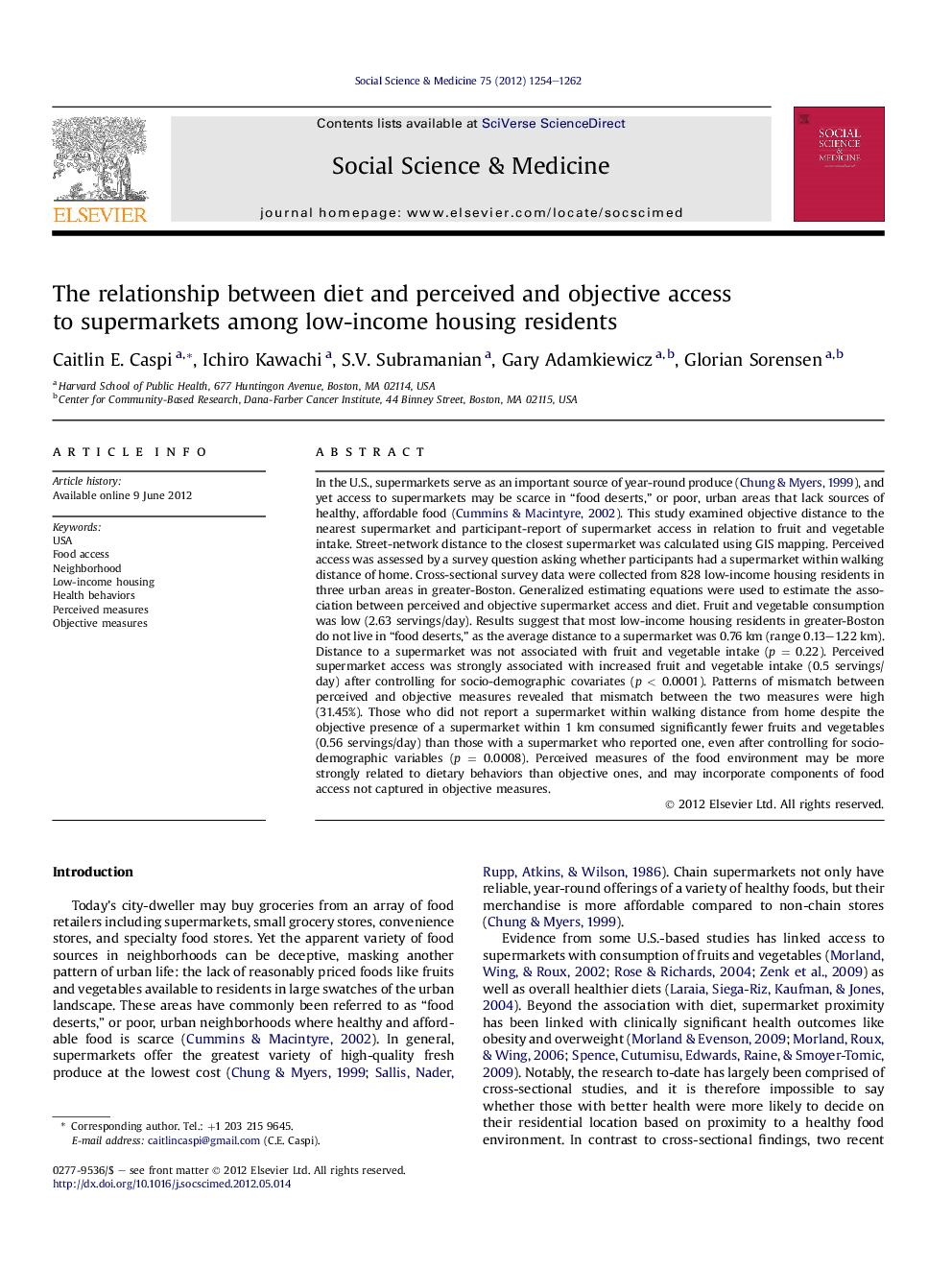| Article ID | Journal | Published Year | Pages | File Type |
|---|---|---|---|---|
| 952469 | Social Science & Medicine | 2012 | 9 Pages |
In the U.S., supermarkets serve as an important source of year-round produce (Chung & Myers, 1999), and yet access to supermarkets may be scarce in “food deserts,” or poor, urban areas that lack sources of healthy, affordable food (Cummins & Macintyre, 2002). This study examined objective distance to the nearest supermarket and participant-report of supermarket access in relation to fruit and vegetable intake. Street-network distance to the closest supermarket was calculated using GIS mapping. Perceived access was assessed by a survey question asking whether participants had a supermarket within walking distance of home. Cross-sectional survey data were collected from 828 low-income housing residents in three urban areas in greater-Boston. Generalized estimating equations were used to estimate the association between perceived and objective supermarket access and diet. Fruit and vegetable consumption was low (2.63 servings/day). Results suggest that most low-income housing residents in greater-Boston do not live in “food deserts,” as the average distance to a supermarket was 0.76 km (range 0.13–1.22 km). Distance to a supermarket was not associated with fruit and vegetable intake (p = 0.22). Perceived supermarket access was strongly associated with increased fruit and vegetable intake (0.5 servings/day) after controlling for socio-demographic covariates (p < 0.0001). Patterns of mismatch between perceived and objective measures revealed that mismatch between the two measures were high (31.45%). Those who did not report a supermarket within walking distance from home despite the objective presence of a supermarket within 1 km consumed significantly fewer fruits and vegetables (0.56 servings/day) than those with a supermarket who reported one, even after controlling for socio-demographic variables (p = 0.0008). Perceived measures of the food environment may be more strongly related to dietary behaviors than objective ones, and may incorporate components of food access not captured in objective measures.
► Distance to a supermarket was not associated with fruit and vegetable intake in a population of low-income housing residents. ► Perceived access to a supermarket was associated with higher fruit and vegetable intake in fully adjusted models. ► Mismatch between participant-reported and objective measurements of the food environment was common.
